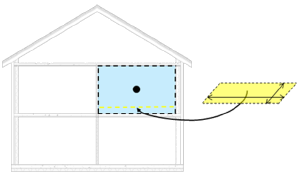Revit Heat Loss Floor

The heat loss of the ground floor is not calculated when building construction is not overwritten.
Revit heat loss floor. This revit extension evalua. Heating loads example part 1 rvt attachment 2. This setting applies only to conceptual masses with mass floors enabled. Window areas below task height typically 0 75 meters or 2 5 feet contribute to heat gain and heat loss without contributing to effective daylighting.
Constructions xml is used for the definition of the constructions. 1 heat loss to ground floor not calculated problem. Heating and cooling loads analysis determines the heating and cooling demands of the building model. Conduction time factors.
The supporting layer for underfloor heating can incorporate service runs such as pipework for other electrical or water services. It can make a significant contribution to reducing downwards heat loss. Conductive heat gain through walls or roofs can be calculated using conductive heat inputs for the current hours and past 23 h and conduction time series. And what is the process of doing it is it about going about setting up the spaces.
My question is is it simple to set up and are the calculations reliable. After spaces have been placed in all areas of the building model and zones have been created and you have prepared the project for heating and cooling loads analysis you can perform heating and cooling loads analysis using the following methods. 32 where hourly conductive heat gain for the surface btu h heat input for the current hour heat input n hours ago etc. Laterlite solutions for heating floor include floor screeds for heating floors thin or conventional hydraulic or electric.
Heating system design it s an add in for the autodesk revit software for the automated heating system calculations and design. Use the integrated tool within revit to. If you have spaces in your model you should see them in the preview on the left pane. For the calculations with revit see attachment 1.
It specifies the distance from the floor to the bottom of the window. After you create spaces and zones you can start using heating and cooling loads tool this tool is available in revit ribbon analyze tab report schedules heating and cooling loads. Click heating and cooling loads. Revit opens the heating and cooling loads dialog.
I we have never really delved into trying some of the other features revit has.















